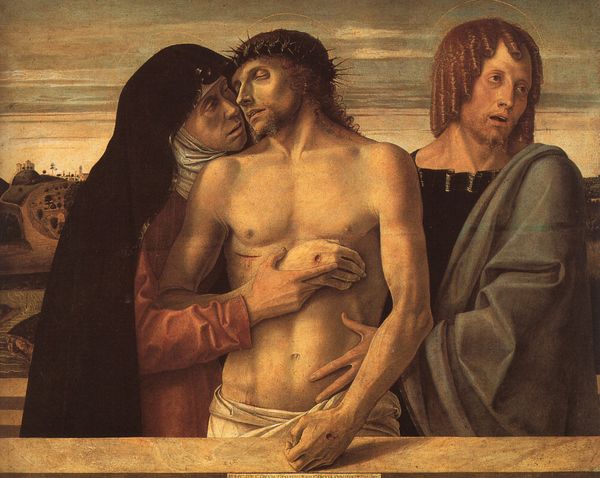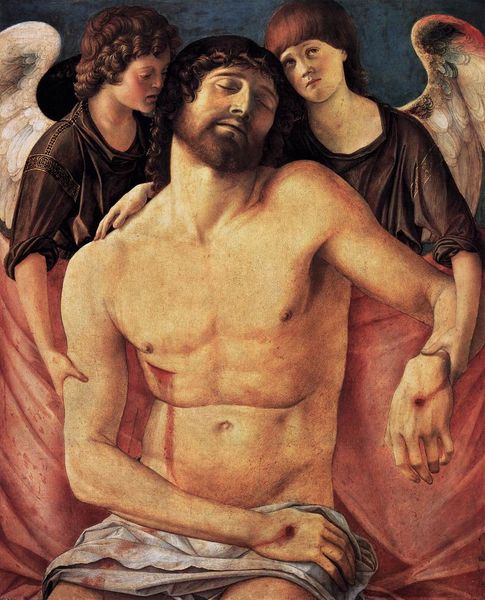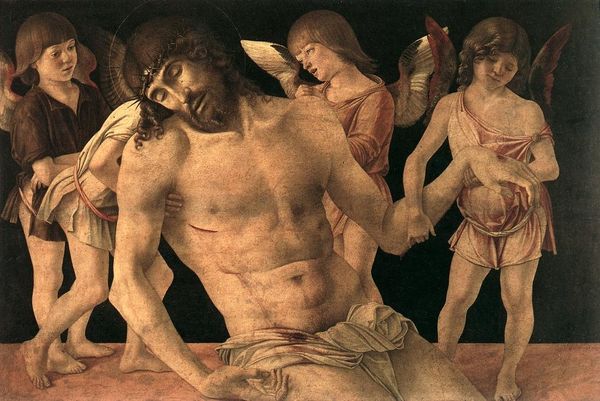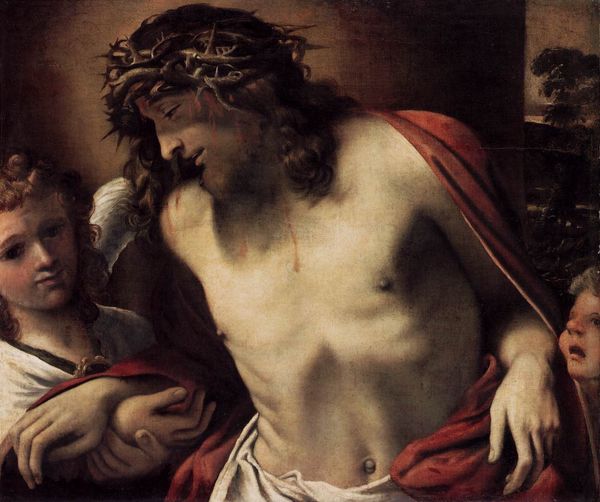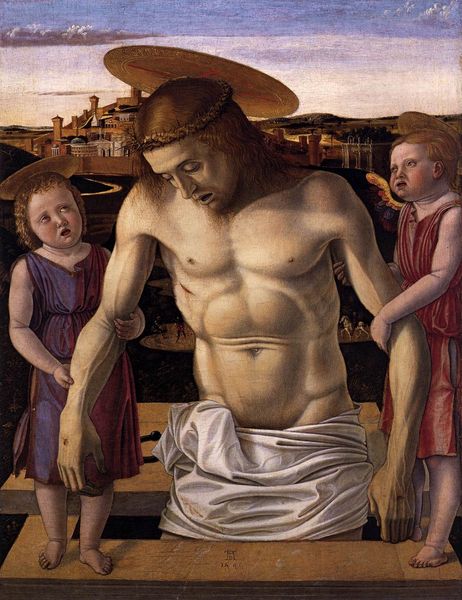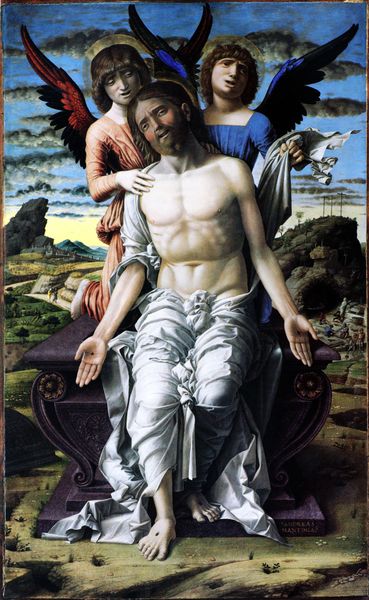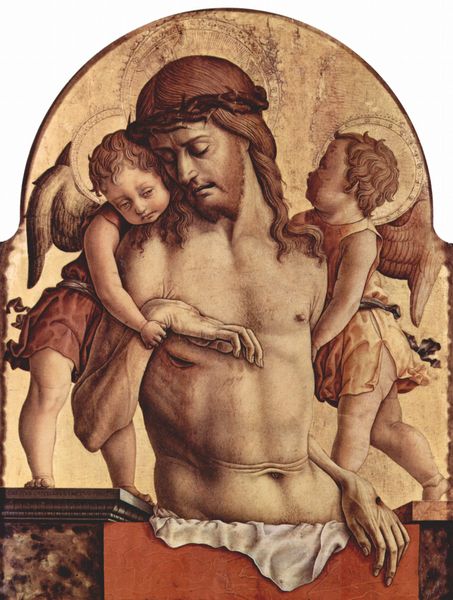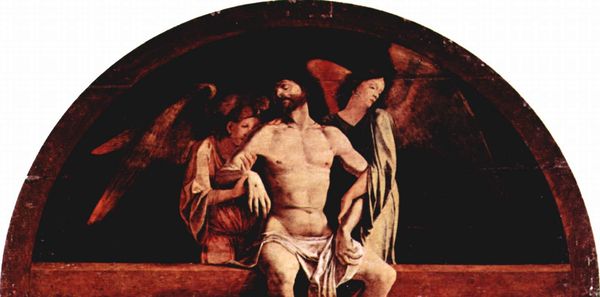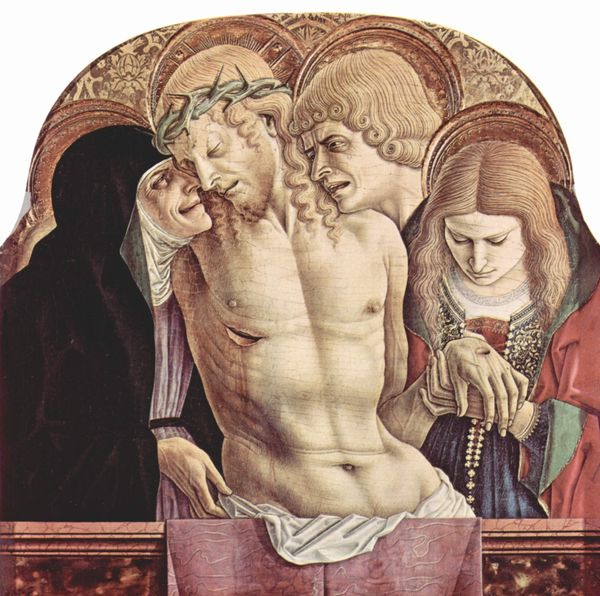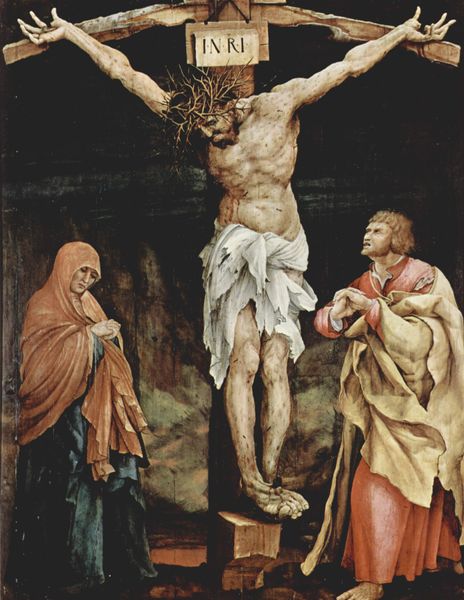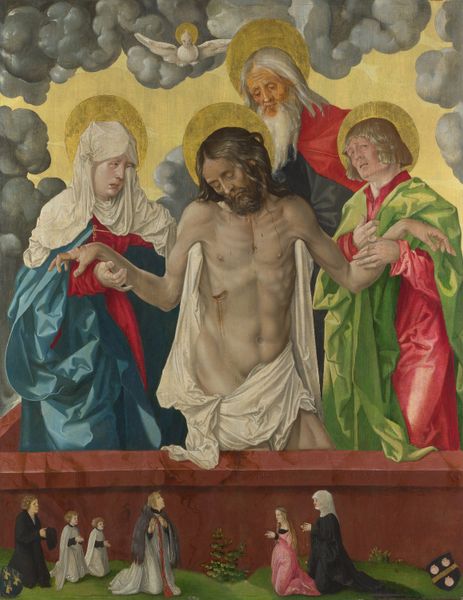
painting, oil-paint
#
portrait
#
painting
#
oil-paint
#
figuration
#
oil painting
#
christianity
#
history-painting
#
italian-renaissance
#
early-renaissance
#
angel
#
christ
Copyright: Public domain
Curator: Here we have Giovanni Bellini's "The Dead Christ Supported by Two Angels," painted around 1470. It's a powerful piece from the Early Renaissance, currently housed here at the National Gallery. Editor: It's incredibly somber. The dark background really amplifies the pallor of Christ's body. There’s a stark contrast between the smooth skin and the graphic wounds, pulling me in different directions. Curator: Bellini was part of a thriving artistic culture in Venice, where painting was deeply intertwined with religious and civic life. This work, painted with oils, speaks to the pervasive influence of religious institutions during this time, and how art served their ideological aims. The materiality here, though, that transition from tempera to oil in the late 15th century is quite evident in those luminous skin tones. Editor: Yes, you can almost feel the weight and texture of the oil paint itself, but the deliberate smoothing feels important to note, it's really calling attention to Christ's vulnerability and physicality. And those angels flanking him... their presence shifts the tone. Are they mourning, or are they protectors, bracing to lift this weighty thing? Curator: The depiction of angels, or perhaps putti, became a common symbolic element in art sponsored by powerful families and church institutions, but those aren’t just generic angelic figures – notice their facial expressions? Each face has been individually rendered so those expressions feel quite private. Editor: The level of craftsmanship is undeniable. Bellini managed to make the scene, even with its overtly religious subject, profoundly human. Curator: Absolutely. Consider the context. Images like this served a function, to instill devotion but also, arguably, to reinforce social order, placing this type of image into churches, reinforcing this narrative in the people's psyche, while still retaining something beautiful and personal. Editor: Examining the layers of the paint and the process reminds us that art is not solely the vision of one "genius" but rather the product of material means, labor, and societal influence. Bellini couldn’t realize that luminosity in flesh until there was widespread distribution and availability of oil-based paints. It has me considering the commercial aspect to artistry that may get glossed over. Curator: Seeing it now with fresh eyes, I’m newly aware of its role both in religious practice, political message and this new, luxurious material, all coexisting. It’s an evocative collision, actually. Editor: Indeed. A poignant mix of piety, politics, and materials converging right here on this canvas.
Comments
No comments
Be the first to comment and join the conversation on the ultimate creative platform.
